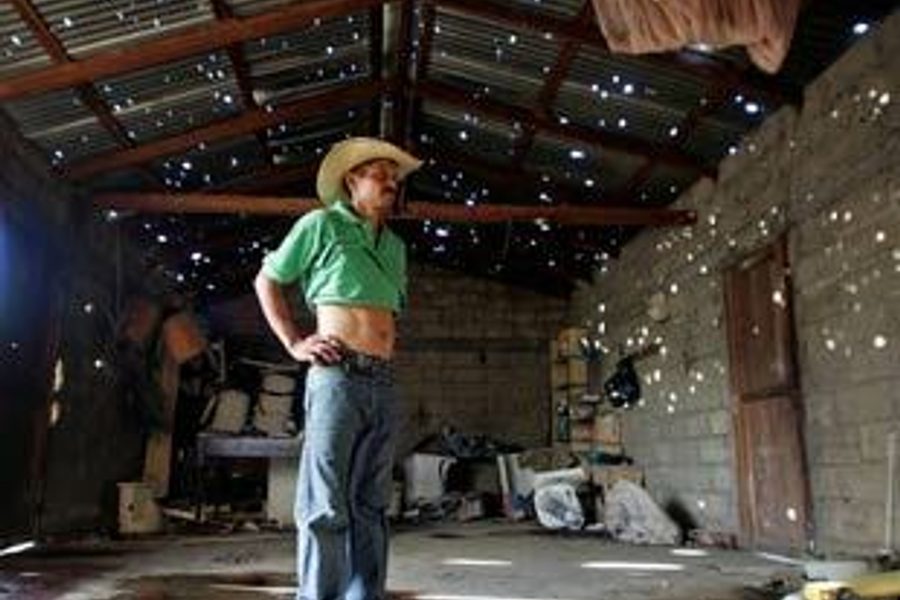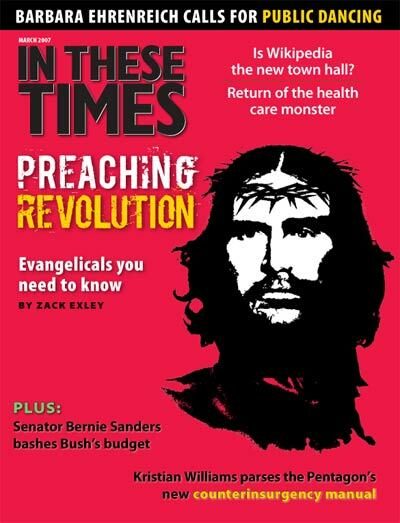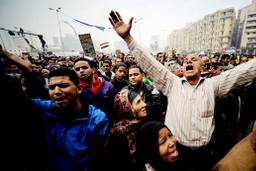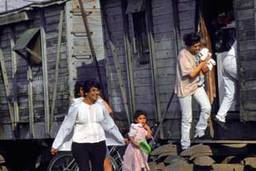Colombia’s Third Way
With the FARC having devolved into little more than bandits, a new left-wing party has emerged
James North

Jorge Franco is a 54-year-old truck driver and a political paradox. On the one hand, he enthusiastically supports Colombia’s right-wing president, Álvaro Uribe, who won reelection last May in a landslide. “Uribe pushed back the subversives and he’s making the country safe again,” Franco says. “That man truly wears pants.
At the same time, Franco is disturbed by the ongoing economic injustice in Colombia, and he takes an open-minded approach toward the new nonviolent left-wing party, the Polo Democráctico Independiente (PDI), that continues to grow after finishing a surprising second in last year’s election with 22 percent of the vote. He angrily dismisses the recent absurdly low increase in the minimum wage – imposed by Uribe – and says he will certainly consider voting for the PDI in regional elections later this year and in the next national vote in 2010.
The PDI also owes its rise to a tremendous scandal that has reached officials at the top of President Uribe’s ruling coalition, even if it has not yet touched him personally. Over the past decade, right-wing, private paramilitary soldiers – numbering up to 30,000 – have massacred thousands of the rural poor, trafficked drugs worth hundreds of millions of dollars, and seized vast tracts of the Colombian countryside – up to one-quarter of the arable land, by one estimate. The paramilitaries, which operate privately but cooperate directly with the Colombian army, are the main reason the country has 2.5 million internal refugees – the largest number in the world outside of Sudan.
Uribe has increasingly come under pressure from the U.S. government, which is unable to ignore the blood his vicious allies are spilling. He offered the “paras” a tacit deal: stop fighting, admit some of your crimes and you will get light prison terms. Thus cleansed, the para leaders could continue to participate in Colombian political and economic life with the hundreds of millions they have made off the drug trade.
But Uribe’s scheme is falling apart. A paramilitary chief’s computer was discovered to contain direct communications between the paras and leading politicians in Uribe’s coalition. A courageous PDI Senator named Gustavo Petro is hammering away at these connections. He wears a bulletproof vest and travels with up to 20 bodyguards.
Unfortunately for the left, when truck driver Franco refers to “subversives,” he is still talking about the 17,000 or so guerrillas of the FARC (Fuerzas Armadas Revolucionarias de Colombia or Revolutionary Armed Forces of Colombia), an insurgency that was once a left-wing movement – the oldest and largest in Latin America. In the past, the FARC stood for the rural poor, but it has degenerated into armed bands with little political content. The FARC now tax and profit from the drug trade in the areas they still dominate. When Uribe came to power in 2002, the FARC was already kidnapping travelers off Colombia’s highways (the group holds about 1,000 hostages), carrying out massacres of its own and launching indiscriminate gas cylinder bombs that kill scores of innocent civilians.
Uribe, aided by the billions of dollars he gets from the United States, enlarged the army and police and pushed the FARC back to remote areas. Now, one can travel safely around Colombia again, which is the single biggest reason Uribe won 62 percent of the vote last year. The president successfully convinced the public that the FARC was their main enemy, even though three-quarters of the 4,000 political deaths each year are caused by the Colombian army and its paramilitary allies.
The strategy succeeded because leftists sometimes mistakenly downplay the value of public order, while rightists understand that personal safety and stability are often more important than even basic economic demands. The PDI is not making this mistake; some of its members have belonged to various guerrilla groups in the past, but firmly distancing itself from the FARC has helped the party gain the support of a growing number of Colombians.
President Uribe is partly a victim of his own success. As Colombians feel safer, they are taking a closer look at their society, and what they see is an unequal nation still dominated by traditional Latin American oligarchs, now joined by the newly rich paramilitary drug barons. Unemployment and underemployment are tremendous; to give one example, thousands of Colombians make a tenuous living by standing around on street corners with cellular phones, offering calls to passersby for a few cents a minute.
— — — — — — — –
While prospects for the Colombian left are promising, activists in the United States also believe they can convince the new, Democratic-controlled Congress to modify the Bush administration’s policy, Plan Colombia, which has spent nearly $5 billion in aid, most of it militarily, in a “war on drugs” that has not only failed to stop the cocaine and heroin trade, but actually strengthened the criminal right.
Here in Pereira, a city of 600,000 in central Colombia’s famous “coffee zone,” new buildings are going up, but they are not financed by the mountainous area’s traditional export. The local paper, El Diario, recognized recently that the city might be experiencing “an artificial boom” due to “drug money – like all over the country.” The coffee zone is just emerging from a worldwide crisis during which prices fell 82 percent below their old level, and along the road down to the Colombian city of Armenia, one can easily see where the frustrated growers actually pulled out coffee bushes from the deep green slopes and replaced them with cattle pastures and banana groves. Jorge Franco, who knows the agriculture of this area well, says you will find the more lucrative export, coca, from which cocaine is derived, “up in the mountains.”
No one, aside from a few half-hearted Bush administration spokespeople, denies that the “war on drugs” in Colombia has failed. As much coca is grown here as in 2000, before the U.S. spent billions of dollars to spray and eradicate it. Colombia and other Latin American countries still produce more than enough to meet world demand. And the price on U.S. streets has not risen at all – which would have happened if the source of supply were really choked off.
In early February, the Bush administration proposed continuing Plan Colombia at $600 to $700 million a year – the most aid given to any country outside the Middle East. The Center for International Policy (CIP) and the Washington Office on Latin America, D.C.-based human rights and solidarity groups that work on Colombia, will lobby not to cut aid, but to shift the proportion away from weapons and fumigation toward strengthening Colombia’s judicial system and helping the rural poor.
Adam Isacson, who coordinates the Colombia program at the CIP, explains: “American addicts and drug users are in effect buying guns for both sides. So you can argue that we have some moral responsibility for what happens there. And a democratic system is growing in Colombia, even if it is far from perfect.”
He hopes the U.S. public will ask more from their elected officials: “Over the past few years, the Bush policy has continued on autopilot because congressional staffers tell us, ‘My boss doesn’t hear from constituents on Colombia.’”
The lack of attention to Colombia is quite extraordinary, when contrasted with the U.S. mainstream media’s obsession with neighboring Venezuela and its fiery president, Hugo Chávez. Uribe, George Bush’s best friend in Latin America, presides over a nation with thousands of political killings each year, most of them linked to his allies, and yet Colombia receives almost no attention from the editorial pages of record and television pundits. Meanwhile Chávez, who has been blamed for very little political violence, is regularly vilified.
That Uribe himself will probably not be directly implicated in the paramilitary scandal is a tribute to his power of denial. Before he won the presidency in 2002, he governed the province of Antioquia, a paramilitary stronghold, and he admits to having met some para leaders “socially.” Not just rumors but years of persuasive allegations by courageous eyewitnesses have linked the right-wing armies to massacre after massacre, yet Uribe somehow manages to know nothing about them. Even if technically innocent, he is guilty of staggering moral blindness.
Among the thousands of victims of the paramilitary violence is Yolanda Izquierdo, a 43-year-old impoverished woman from the lawless frontier area in the northern part of the Province of Córdoba whose family’s land was stolen by the para in the ’90s. She was not afraid to speak out, and she traveled to the nationally publicized hearings into paramilitary violence to represent 800 other families whose small farms were also stolen.
Izquierdo received anonymous threats. She asked for government protection, but it never came. On Jan. 31, she was murdered in a shantytown outside the regional town of Monteria, where she, her husband and their five children had fled after losing their land.
The words “Colombia” and “violence” have become synonymous, often with the implication that kidnapping and murder are an intrinsic part of the nation’s history and culture, and that change is therefore hopeless. In fact, the violence in Colombia is not of the result of irrational outbursts but rather a cold, calculated strategy by the politically dominant to hang onto, and increase, their power.
Yet there is hope. An overwhelming majority of Colombians reject violence, and the nonviolent, democratic left is stronger than ever. The question that confronts the Democratic Congress is this: Will the United States send hundreds of millions of dollars to support Uribe and his friends or will it come to the aid of people like Yolanda Izquierdo?








